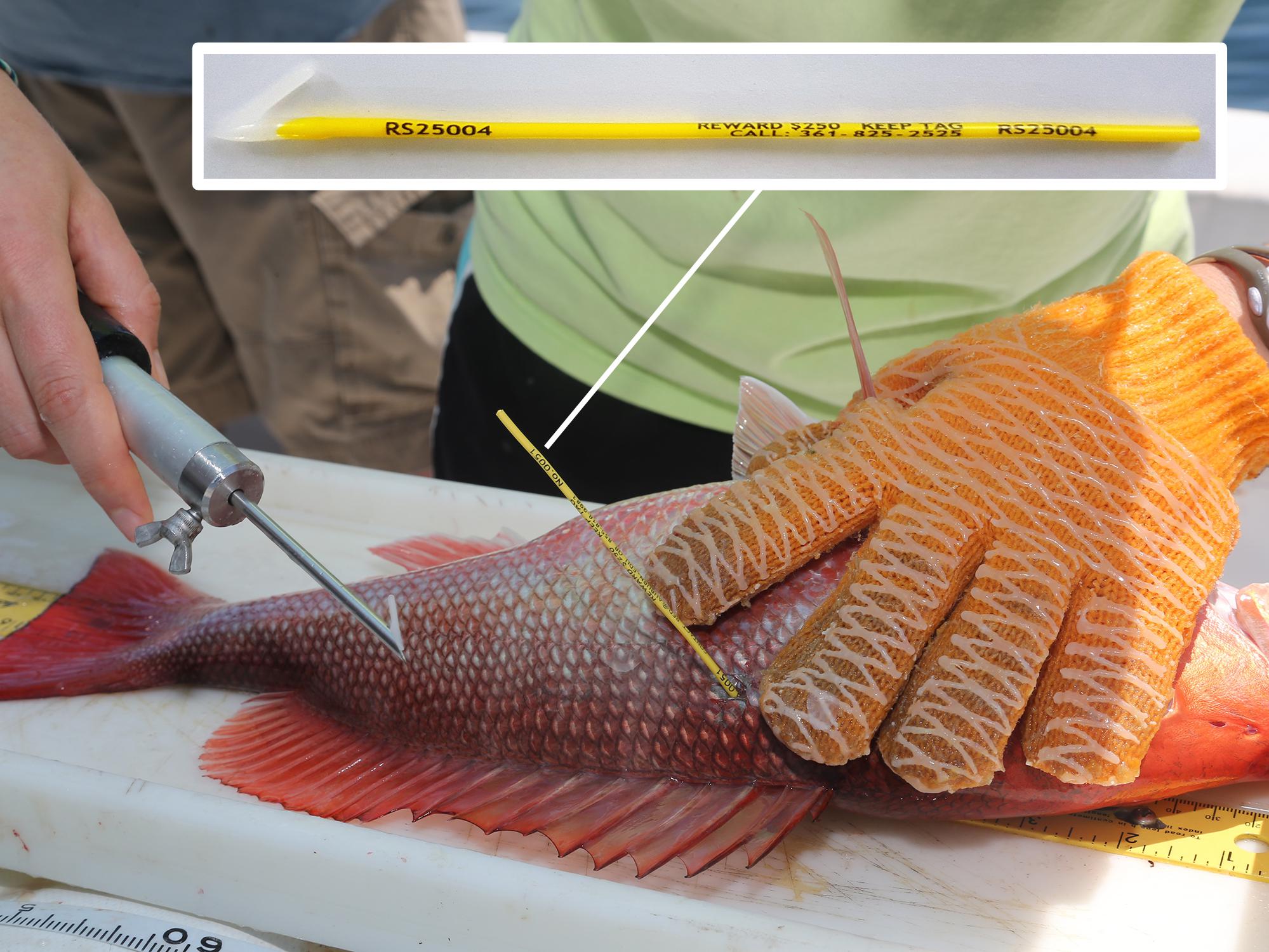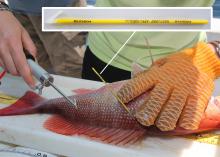Information Possibly Outdated
The information presented on this page was originally released on January 18, 2019. It may not be outdated, but please search our site for more current information. If you plan to quote or reference this information in a publication, please check with the Extension specialist or author before proceeding.
Anglers snag rewards with some red snapper
BILOXI, Miss.-- The Gulf of Mexico red snapper fishery is economically and culturally important, but it is also very controversial. Fishing pressure during the past century led to the decline of Gulf red snapper.
Today, anglers see more red snapper than in previous years, so they believe the population is healthy again. However, managers with National Oceanic and Atmospheric Administration Fisheries claim that the population is not yet healthy because it does not contain enough reproductively active females.
Recognizing the conflict between anglers and managers, Congress approved funding for a project that would calibrate, or check, the metrics used in the NOAA Fisheries red snapper stock assessment. Subsequently, Mississippi-Alabama Sea Grant awarded $10 million to a team of scientists for a two-year project (2017–2019) known as the Great Red Snapper Count. The goal of the project is to use a variety of scientific methods to independently (separate from NOAA Fisheries) estimate the number of red snapper in the Gulf of Mexico.
The project is in full swing. So far, scientists have classified the types of habitat present in Gulf waters; completed visual counts of red snapper using underwater cameras and sonar equipment; and conducted depletion surveys. This spring, the project team will initiate the final component of the project: a tagging study.
During April and May 2019, scientists will tag and release 4,000 legal-sized red snapper across Gulf waters. Tagged fish will be released immediately before the Gulf states’ red snapper recreational fishing seasons, which are expected to begin in June. Yellow tags with text beginning with “RS” followed by a unique five-digit number will be placed on each fish’s back beneath its dorsal fin. While most fish will have one tag, some will have two tags so that scientists can determine how often tags are shed.
The red snapper tagging study will rely greatly on participation from both commercial and recreational fishers. Fishers can get involved by recapturing tagged fish and calling the phone number printed on the tags to report the recaptures to the Great Red Snapper Count scientists. Upon catching a tagged red snapper, fishers should record specific information, including the fishing port from which they departed, the date the fish was caught, the fish’s length and weight, the fish’s tag number, and the latitude and longitude where the fish was caught.
Fishers who report their recapture information and return the tag to the research team will receive a $250 reward. The physical tag must be mailed in to claim the reward, so anglers should clip off and save the tag, even if they plan to release the fish.
Data from the tag returns and other components of the Great Red Snapper Count will be used by scientists to estimate the number of red snapper in the Gulf of Mexico.
For more information about the Great Red Snapper Count, please visit http://www.SnapperCount.org.

Editor’s Note: Extension Outdoors is a column authored by several different experts in the Mississippi State University Extension Service.







